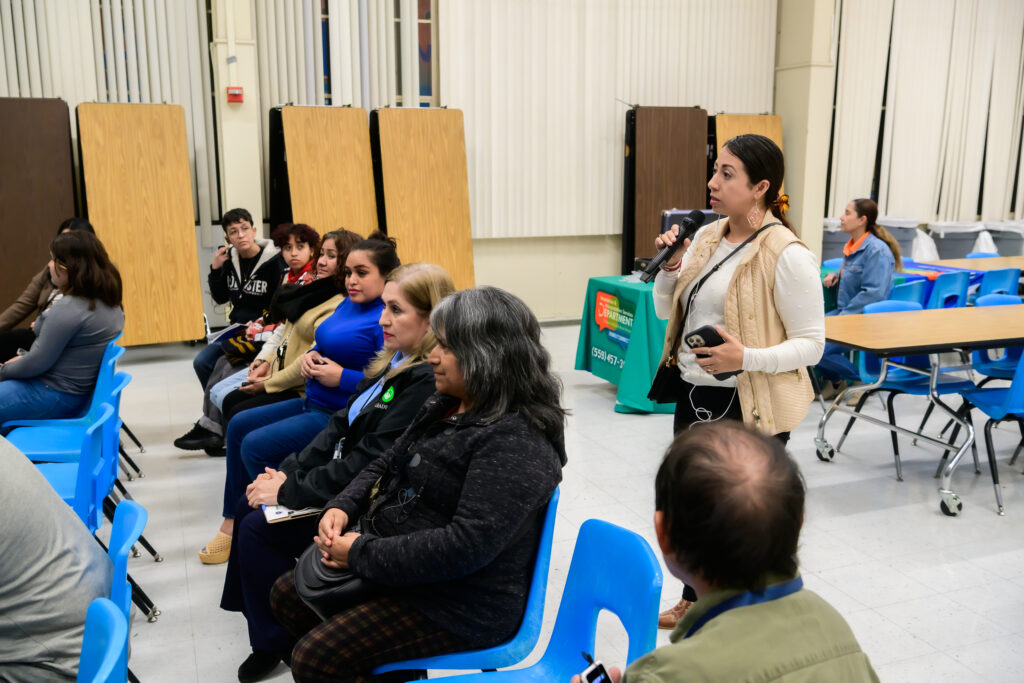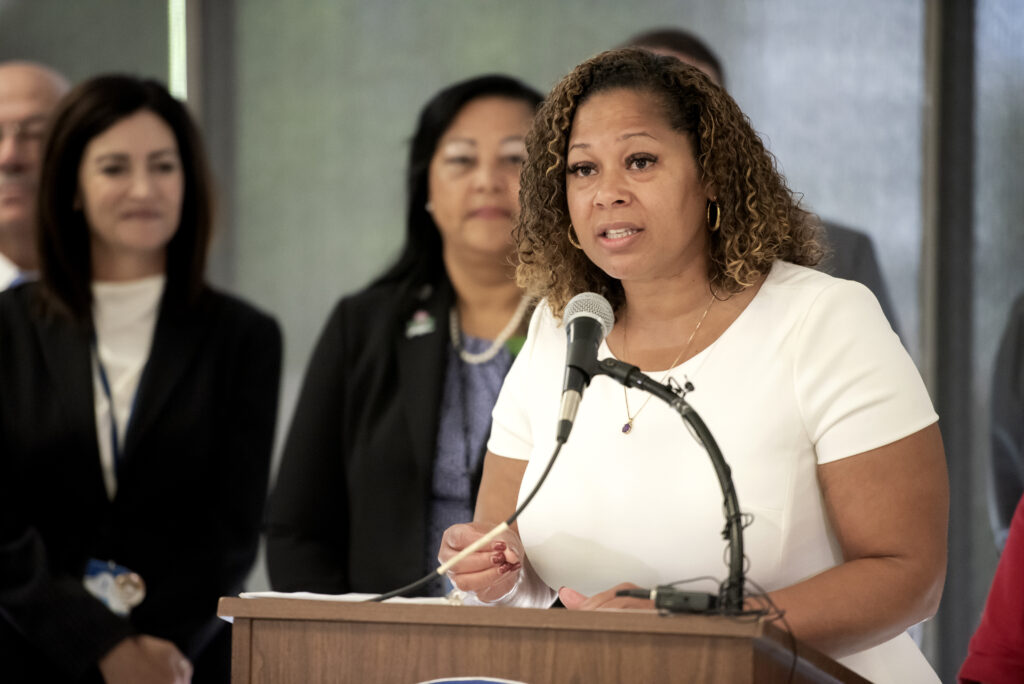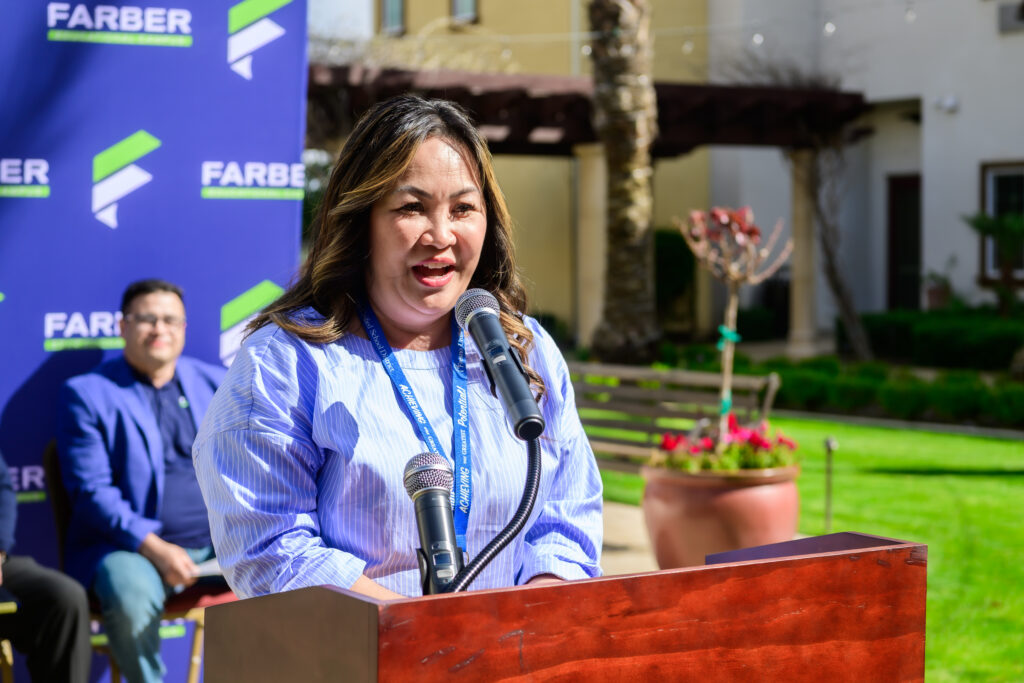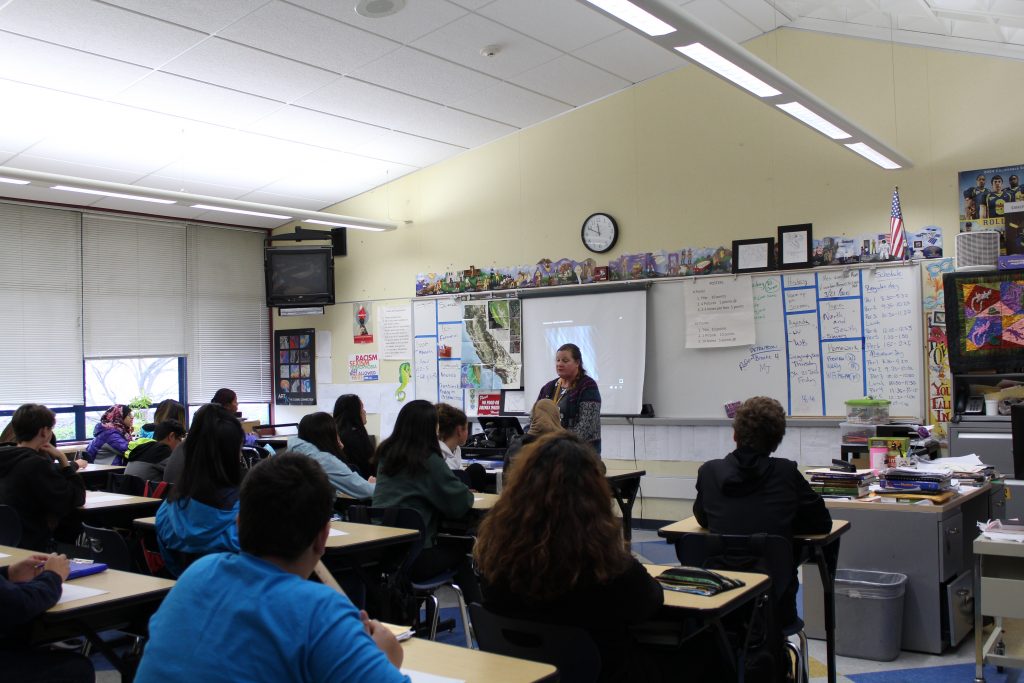
Community members attend a listening session on Feb. 21 at Duncan Polytechnical High in Fresno to discuss the search for a new superintendent.
Credit: Fresno Unified / Flickr
At a special meeting Wednesday, the Fresno Unified School District board bowed to community pressure and postponed already scheduled interviews of district employees vying for the superintendent job.
The seven-person board was set to interview internal candidates during a closed session — an initial step in the process to select the next superintendent for the state’s third-largest district — before deciding whether to expand the search to candidates beyond the school district.
The boardroom was packed, standing-room-only, with parents, students, staff and other community members. An overflow crowd watched the meeting on TV screens on the first and second floors of the district building.
Thirty speakers echoed support for one of three positions regarding the search process: that the board’s decision to start with internal candidates first was best, that the board should’ve conducted at least a statewide search from the start, or that the process has been plagued by politics, so far.
The meeting displayed a divided school system and raised questions about the school board’s ability to select a leader to guide a district that desperately needs to improve student outcomes.
Outrage had been mounting among community members since the board’s March 20 closed-session decision on how to proceed with the search, which resulted in dueling board factions.
Trustee Claudia Cazares on Wednesday led a 5-2 vote, compelled by community feedback, to postpone the interviews until further deliberation. The “no” votes came from trustees Andy Levine and Veva Islas, who argued that the interviews had been scheduled.
Cazares said that “to make it cleaner for us and more transparent, that we take a giant step back and start fresh from the beginning, including additional community input, before we move forward with any interviews.”
Pausing gives the board an opportunity to further discuss the search process, correct misconceptions spreading in the community and ensure people are heard, trustee Elizabeth Jonasson Rosas said during the meeting.
“It’s ultimately about trust in Fresno Unified,” Jonasson Rosas said. “I want everybody to be absolutely clear about what we’re actually doing.”
Even with the board’s decision to change course, the unrelenting public clamor for transparency and the elimination of political agendas will likely shape how the search for superintendent proceeds.
“When people talk about misinformation and misrepresentation — when there is no transparency, that is what happens,” said community member Christina Soto.
‘To ensure that FUSD staff are seen and heard first’
On Jan. 22, Superintendent Bob Nelson announced his resignation to start a tenure-track position at Fresno State. During a closed meeting on March 20, the school board, tasked with hiring and firing the superintendent, decided to interview internal candidates first, before deciding how to proceed with the search.
Board member Keshia Thomas said she made her decision in order to ensure Fresno Unified staff are “seen and heard first.”
“These people have given their lives to the district,” Thomas said, “and they deserve that much.”
Another reason given for wanting to interview in-house stemmed from the budget implications of launching a national search, which may be unnecessary, in the context of a $30 million deficit the district faces.
The first phase of the search — eliciting community feedback and creating the job description — cost the district $40,000 in fees from the search firm Leadership Associates. Another phase, whether completed by Leadership Associates or another firm, could cost between $75,000 and $100,000, Thomas said. The second phase has not been determined by the board.
“We’re shelling out all this money to search firms to do this work,” Thomas said. “And if we don’t have to, we really shouldn’t spend it.”
When Nelson was tapped as superintendent in 2017, the board conducted a costly national search that eventually chose an internal candidate.
After the departure of Nelson’s predecessor in 2017 and the uncertainty about who’d lead the district in the period until the new superintendent started, the school board implemented a plan for the resignation of the top district leader. The succession plan, formed in the early years of Nelson’s tenure, involved creating the position for and hiring a deputy superintendent who would be prepared to step in; it’s also a quasi-grow-our-own leadership model that ensures continuity during and following the transition of district leaders.
When Nelson announced his resignation, he told EdSource he’d continue serving as superintendent until July 31, which will trigger the district’s succession plan. The school district confirmed in a media release about Nelson’s resignation that Deputy Superintendent Misty Her would be named interim superintendent.
The board has approved succession planning and grow-our-own programs at different levels across the district, said Annarita Howell, the district’s assistant superintendent for human resources. She was one of the district’s staff members and students who supported the board’s initial decision to interview internal candidates.
“My wondering is why we question that succession planning now (that) you have been supporting for the last 10 years?” Howell asked.
Brown Act violations?
Some board members blame the community outrage on information leaked from a closed session that has been misconstrued by those who accuse the board of a lack of transparency.
An update on the March 20 meeting for the search informed the public that the board had decided to interview in-house candidates. Details of the 4-3 decision and how each board member voted was leaked to GV Wire, a digital news site, which Thomas said violates the Brown Act, legislation guaranteeing the public’s right to attend and participate in meetings for bodies such as the school board.
“Only people in that room were privy to who thought what,” she said. Only board members and representatives from the search firm were present at that meeting.
According to Bryan Martin, attorney for Fresno Unified, the Brown Act generally requires the board to report out final actions that the board makes in closed session, including reporting how each board member “voted.” He didn’t consider the 4-3 decision to interview internal candidates as a final action.
Thomas confirmed that she was one of the four who chose to interview internal candidates first, a decision she stands by. But the leaked decision created a misconception that the four wanted to only interview and choose the new superintendent from staff.
District spokesperson Nikki Henry also said that what was communicated to the public was not what happened, and that the 4-3 decision was never about limiting the search to internal candidates only, but about starting with FUSD employees.
“The board has never said that they will only look at internal applicants,” she said. “There’s never been anything from the board that has said they will not go to a statewide or national search for the superintendent.”
Skepticism of the process, Henry said, likely came because the board was taking the search one step at a time and allowing each step to inform the next step.
“The whole process is not going to happen out in the open because that’s not how it’s done,” Thomas said. “That’s not how you do any interviews or hire any person if you’re an HR person.”
And the school board is the human resources for the superintendent hiring, she said.
In a Tuesday news conference called by board President Susan Wittrup, community leaders, including those in the teachers union as well as city council representatives, called on Fresno Unified board members to conduct the search the “right way,” at least statewide and in an open and transparent way, led by and with community involvement.
Wittrup said the school board needed to change course with the way it decided to handle the search, an action that the board has now taken.
Thomas said Wittrup’s actions have made matters worse.
“Trustee Wittrup decided to fabricate the truth about what was said and what was requested by a majority of the trustees,” Thomas said about an editorial published in GV Wire that Wittrup wrote as well as other statements she made to the media.
Manuel Bonilla, president of the Fresno Teachers Association, said on Tuesday that there needs to be a public discussion about why the original decision was made.
He said that the explanation that the process be conducted in closed session as an HR process is an excuse.
In other places across the country, applications and interviews of those applying for a superintendency are open to the public because of state legislation.
Even individuals not associated with education, such as Darius Assemi, publisher of the online news site GV Wire and CEO of Granville Homes, a real estate development company, which he admitted doesn’t build homes in the Fresno Unified area, joined Tuesday’s event.
Assemi said that the community deserves better than a closed-door selection and hiring process.
“It should be a transparent, open process so that the public sees what actually takes place,” he told EdSource before the board backpedaled its decision. “Not behind closed doors; not in secrecy.”
Many say their voices were unheard
Another factor creating concern about the search process is related to the 24 listening sessions conducted in February and the search firm’s report on those sessions.
The search firm’s summary, not even a full two-page document, lists and briefly details key themes deemed necessary for the district’s next leader, including:
- An educational background that includes experience as a teacher, an administrator and other roles, and administrative credentials
- Experience and understanding of the district’s history, culture, complexities and diversity. According to the summary, the community preferred internal candidates and applicants with ties to the Central Valley
- Effective communication skills and the ability to collaborate and engage with people in the school community
- A strategic vision supported by data-driven strategies
Wittrup said Leadership Associates’ report misinformed board members about what the community wanted, and that community members felt their voices went unheard during the listening sessions because they asked for a search beyond district personnel.
“I have heard overwhelmingly from parents and constituents across this city that their voice was not captured,” Wittrup said. “That would be a travesty if we used misinformation to make these decisions.”
Community member Soto said she invested at least five hours in attending various listening sessions, just to have that information “disregarded and misrepresented.”
“Communities stated that we wanted someone that was familiar with the Valley,” she said. She was one of at least 10 people who spoke at Wednesday’s meeting in support of a search not limited to internal applicants. “I’m sure there are many people across the state and maybe the nation who have Central Valley roots who would be qualified to be superintendent.”
Community members at board meetings, including Wednesday’s, and through conversations with trustees have recommended a national or statewide search as well as a districtwide search committee to interview candidates.
Board member Cazares said in an April 2 Facebook post that she had originally asked board leadership for a community committee to assist in the search. Cazares was named as one of the four who wanted to start with the internal search. She could not be reached to confirm.
“I hope that board president (Trustee Wittrup) would reconsider my recommendation,” Cazares said in her social media post.
Board member Valerie F. Davis, also named as one of the four who chose to start with the internal search but couldn’t be reached to confirm, said she has hired three superintendents, in which the board “always” had community members as part of the search committee.
The original board decision, Bonilla said, eroded the community’s trust because the closed-door decision came without community input. He added that now, after an outpouring from frustrated community members, the board is deciding to “take steps in the right direction.”
What else complicated the process?
Wittrup is the sole board member who publicly challenged the board’s original decision. In the weeks before Tuesday’s news conference and Wednesday’s board meeting, Wittrup was the first of nearly 400 people to sign Break the Cycle of Failure at Fresno Unified, an online petition about the decision to start with internal candidates. She also penned an opinion piece about the matter.
“It’s the only way I know,” Wittrup said about the appropriateness of her actions to write an op-ed and host a news conference to challenge the board’s decision.
Board member Levine, though he’s remained quiet about the March 20 closed-session discussion, shared his position last week via Facebook and with EdSource. He supported inviting both internal and external candidates to apply and said that a process to consider all candidates at once sets up the board’s pick for success. The community would know the decision is based on a competitive and rigorous process.
He said he didn’t see the need to attend Tuesday’s new conference because the board must figure out how to move forward as a unit.
“We need to figure out, as a board, how to come together to get there, hopefully,” he said.
So what happens next?
It’s still unclear how the process will proceed, even after the board met in closed session for about an hour Wednesday night.
Whether community members want the board to maintain its direction to interview internal candidates first, to redo the entire process or to eliminate political influence, “we can’t do stuff behind closed doors,” said community member Gloria Hernandez.
“We need to proceed in this process in the most transparent way,” Roosevelt High teacher Marisa Rodriguez said, “so that we can gain the trust of our community.”
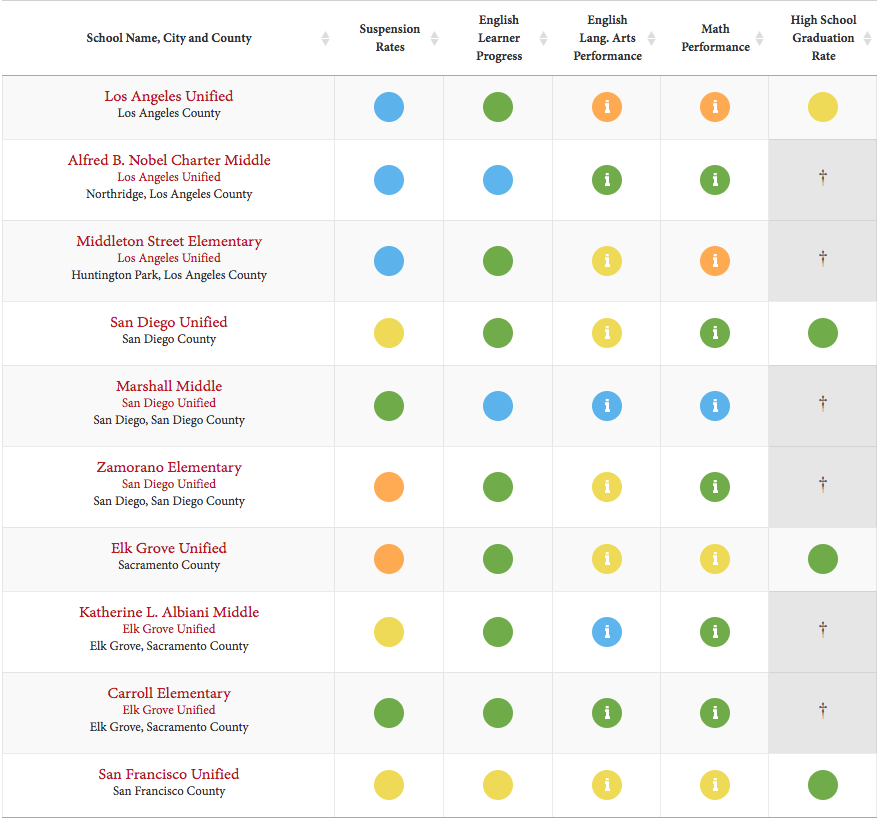
)
)
